With the ROG GeForce GTX 1070 Ti Strix Gaming, Asus puts an interpretation of the GP104, which has been slimmed down into the GTX 1070 Ti, on the customer shelf, which actually does almost everything right and nothing wrong. Of course, this also expresses something in the price, but we can already spoil the fact that there is virtually nothing wrong with the card.
Of course, this card is also subject to the usual limitation that Nvidia has given to every manufacturer with the clock specifications. But at least the Asus-owned software offers the possibility of a de facto 1-click overclocking, which can be reflected in a significantly better overall performance with further manual increase.
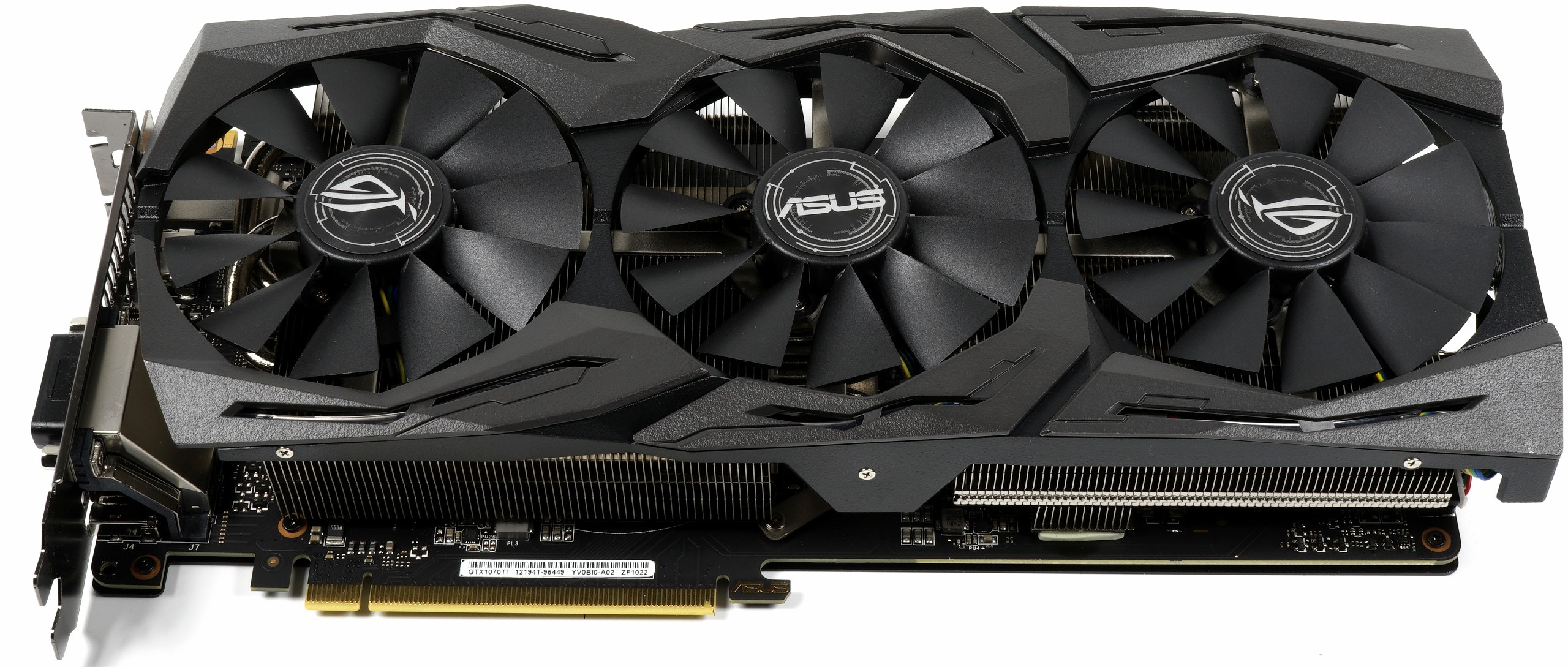
Important preliminary remarks
Since the actual performance of all board partner cards of the GeForce GTX 1070 Ti ex works has to be very similar due to the fixed base and boost offset for all manufacturers, the real achieved results depend more on the actual achieved in practice. Boost cycle, and thus indirectly from the cooling and primarily also the quality of the respective chip.
Each test based on benchmark bars is therefore only a random snapshot of a single specimen. This is precisely why we have focused on the actual technical implementation of each model and have been able to document this very well with our equipment.
Within the necessary tolerance ranges, it is definitely NOT possible that the performance of a particular card could be preceded by all others. We have therefore no longer used a manufacturer's name for the benchmarks, because according to chip quality, any card from any manufacturer can tend to the lower or upper performance limit.
Unboxing, dimensions and connections
We will discuss the exact board and cooling design separately later. The most important features are first summarized in a table:
| Overview of installation dimensions, features and connections | |
|---|---|
| Installation length: |
30 cm (slot aperture to end cover) |
| Installation height: |
12.5 cm (upper edge slot to top card) |
| Depth: |
4.5 cm (2-slot) 0.5 cm baking plate |
| Weight: |
1151 grams |
| Backplate: | Yes, without cooling function, RGB logo |
| Cooling: | Air Vertical-aligned cooling fins |
| Fan: |
3x 9 cm (8.7 cm rotor diameter) 11 rotor blades each semi-passive lyrised |
| Connections Slot blend: |
2x DisplayPort 1.4a 2x HDMI 2.0 1x Dual-Link DVI-I |
| Other connections: |
2x SLI Connector |
| Power supply: |
8-Pin PCI-Express |
Exterior views
The radiator cover is made of the usual, almost black ABS material, where you follow the own design line of the other Strix cards. You're looking for colour accents in vain on the surface, but it also fits in the same way. Because there are also the RGB-lit areas for The Christmas tree lovers.
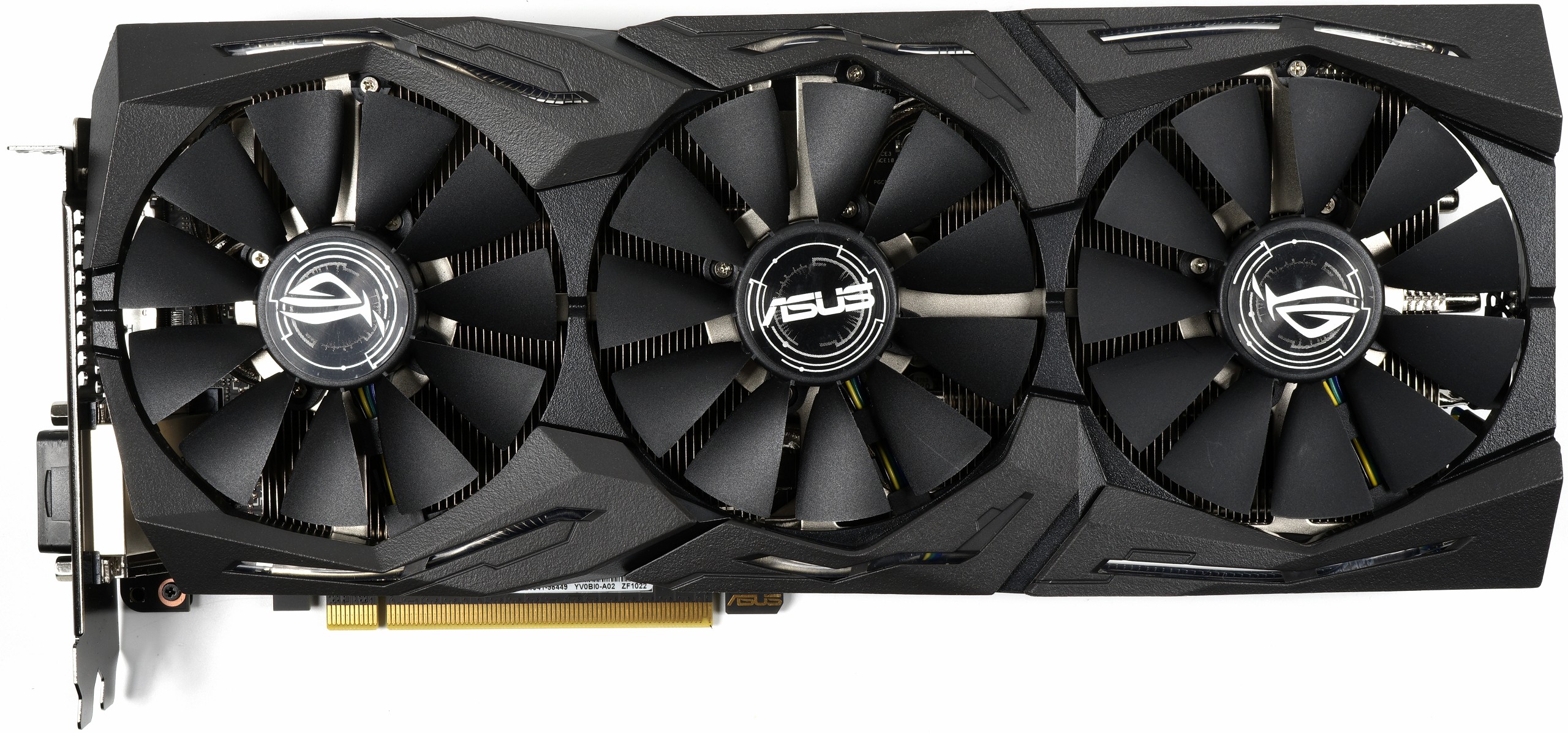
The card with its 1151 grams is a slightly heavier middleweight, but not yet a real bad boy. The height of 12.5 cm is average, but the installation depth of 4.5 cm is quite baroque, because you can easily block 2.5 slots.
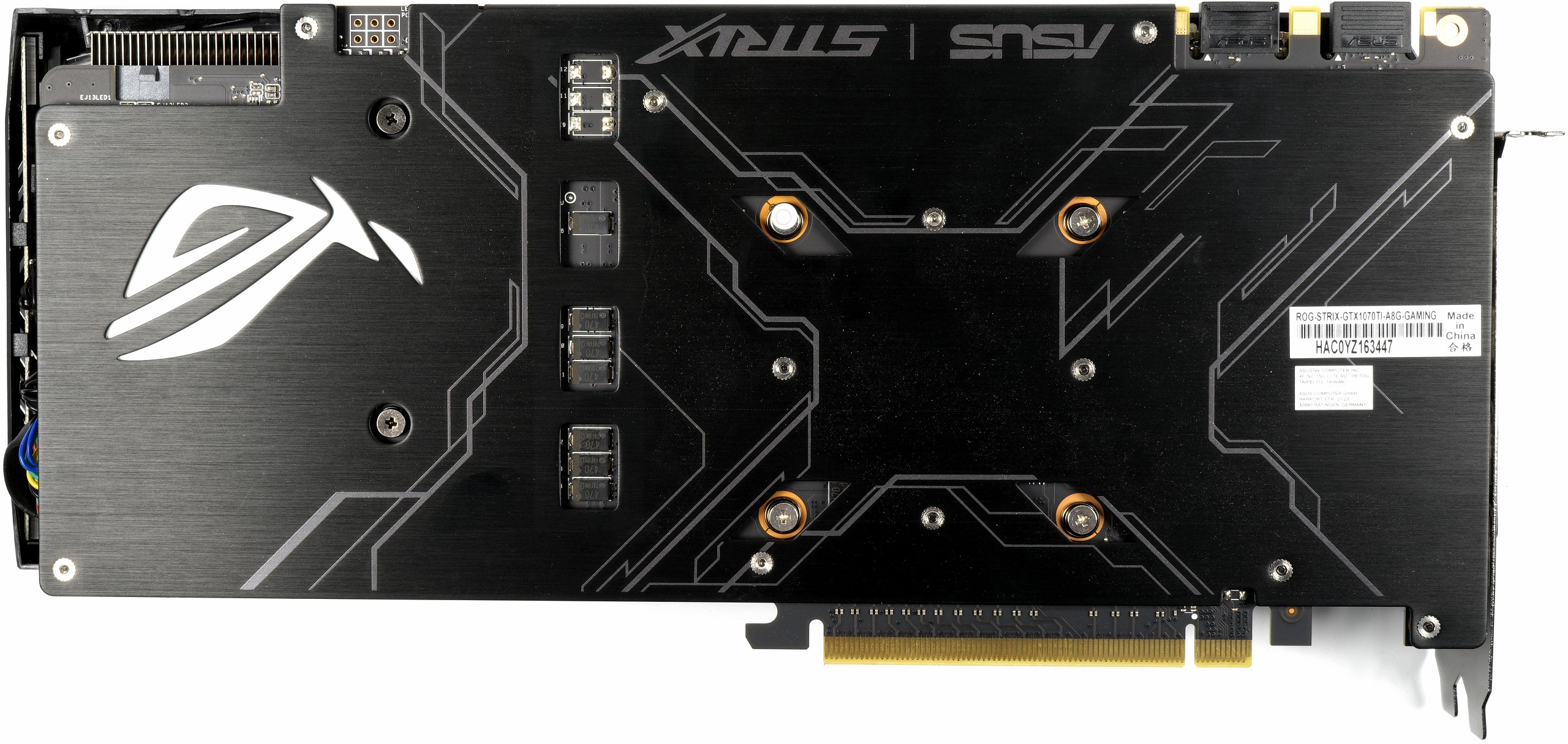
The back of the board is covered by a one-piece, blackened aluminum backplate with an RGB backpanel, but it has no cooling function.

The top of the map bears an RGB backlit ROG lettering, the color play of which can also be controlled via the supplied software. We also find the 180° turned 8-pin external PCIe power supply connection at the end of the graphics card.

The end of the map shows, like its underside, that the slats are vertically aligned and thus no air flow towards the end of the map or Slot aperture goes. Almost half are pressed towards the motherboard, which is not really the evolutionary crown. However, one can now argue about what is counterproductive in the end, because multiple curved heatpipes for a horizontal design do not make the transport of waste heat exactly more efficient.
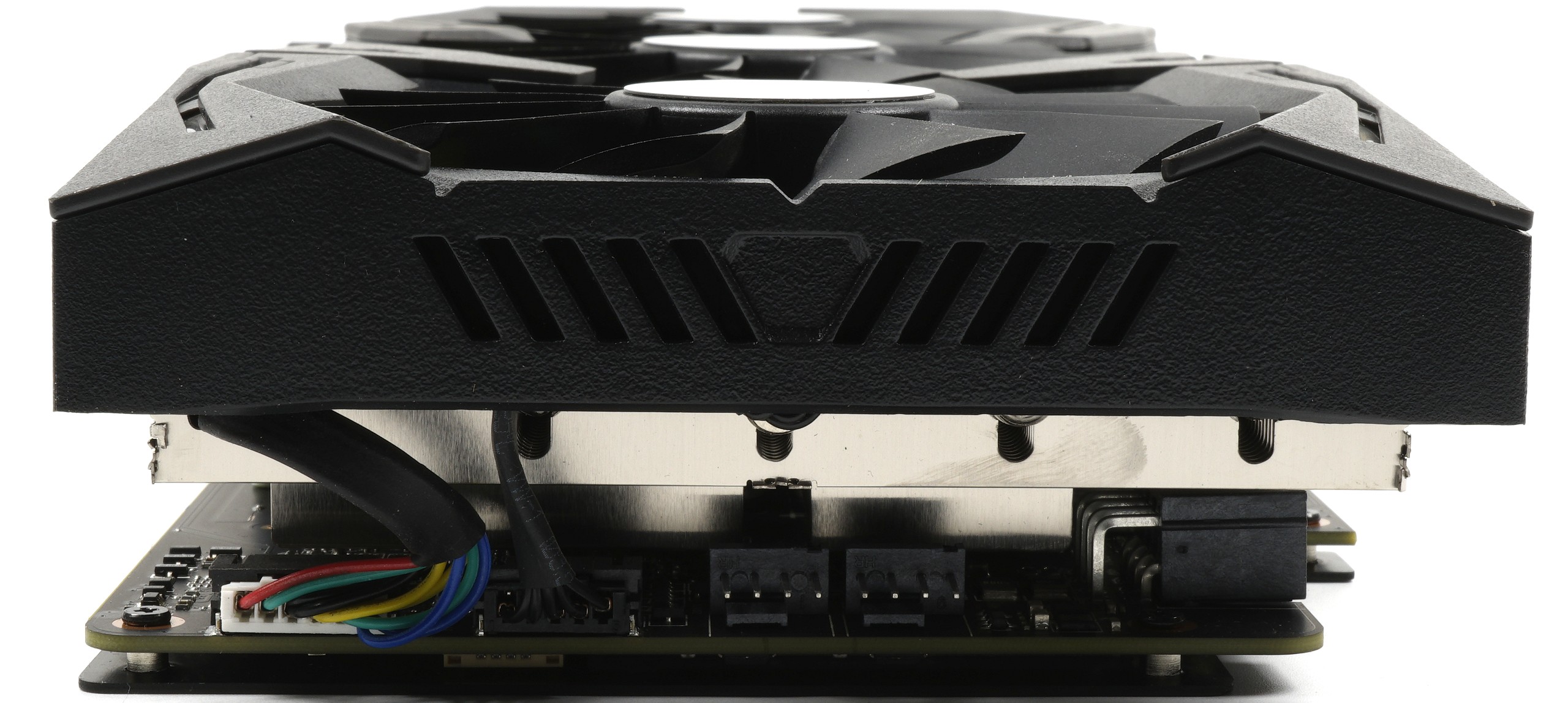
The slot aperture offers a total of five outputs, of which a maximum of four can be operated together (multi-monitor setup). In addition to the dual-link DVI-I (no analog signal looped through), there are two HDMI 2.0 outputs and two DisplayPort 1.4 ports on the back. The rest of the slot aperture is provided with some openings for the air outlet, which hardly fulfils a real function.
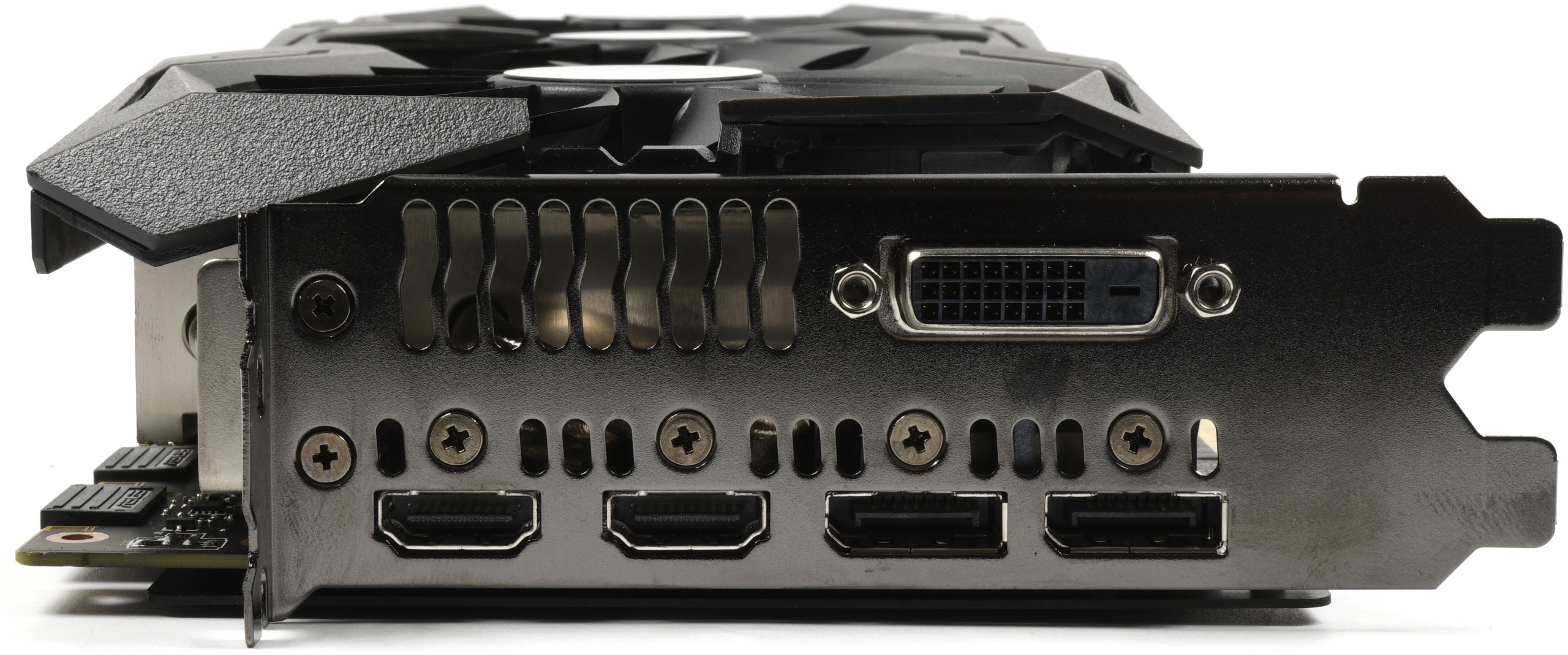
The exterior no longer offers more secrets.
Specifications
Since the ex-factory specifications must be the same for all GeForce GTX 1070 Ti, the following table applies equally to all cards:
| Gpu |
GeForce GTX 1080 (GP104) |
GeForce GTX 1070 Ti (GP104) | GeForce GTX 1070 (GP104) |
|---|---|---|---|
| Sms |
20 | 19 |
15 |
| CUDA Cores |
2560 | 2432 |
1920 |
| Base Clock |
1607 MHz |
1607 MHz |
1506 MHz |
| GPU Boost Clock |
1733 MHz | 1683 MHz |
1683 MHz |
| GFLOPs (Base Clock) |
8228 | 7816 |
5783 |
| Texture Units |
160 | 152 |
120 |
| Texel Fill Rate |
277.3 GT/s | 244.3 GT/s |
201.9 GT/s |
| Memory Data Rate |
10 Gb/s | 8 Gb/s |
8 Gb/s |
| Memory Bandwidth |
320 GB/s | 256 GB/s |
256 GB/s |
| Rops |
64 | 64 |
64 |
| L2 Cache |
2MB | 2MB |
2MB |
| Tdp |
180w |
180w |
150w |
| Transistor |
7.2 billion | 7.2 billion |
7.2 billion |
| The Size |
314 mm2 | 314 mm2 | 314 mm2 |
| Process Node |
16nm | 16nm | 16nm |
Test system and measurement methods
The new test system and the methodology have already been described in great detail in the basic article "How We Test Graphics Cards" (English: "How We Test Graphics Cards") and therefore, for the sake of simplicity, we now only refer to this detailed Description. So if you want to read everything again, you are welcome to do so. However, we have improved CPU and cooling once again in order to largely exclude possible CPU bottle necks for this fast card.
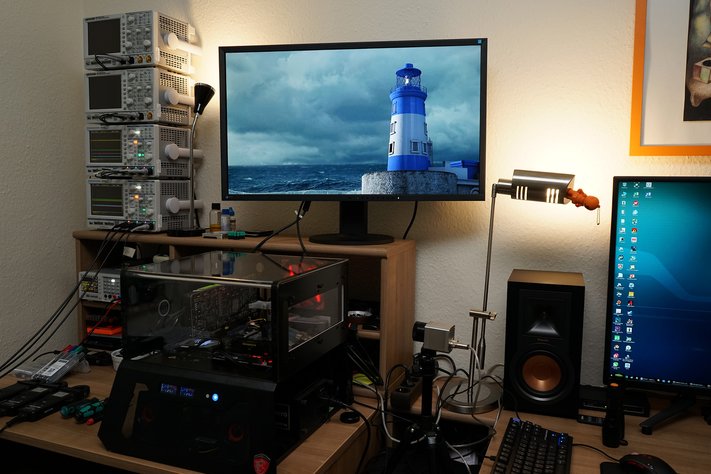
If you are interested, the summary in table form quickly provides a brief overview:
| Test systems and measuring rooms | |
|---|---|
| Hardware: |
Intel Core i7-6900K -4.3GHz MSI X99S XPower Gaming Titanium Corsair Vengeance DDR4-3200 1x 1 TByte Toshiba OCZ RD400 (M.2, System SSD) 2x 960 GByte Toshiba OCZ TR150 (Storage, Images) Be Quiet Dark Power Pro 11, 850-watt power supply Windows 10 Pro (all updates) |
| Cooling: |
Alphacool Ice Block XPX Alphacool Ice Age 2000 Chiller 2x Be Quiet! Silent Wings 3 PWM (Closed Case Simulation) Thermal Grizzly Kryonaut (for cooler change) |
| Housing: |
Lian Li PC-T70 with expansion kit and modifications Modes: Open Benchtable, Closed Case |
| Monitor: | Eizo EV3237-BK |
| Power consumption: |
non-contact DC measurement on the PCIe slot (Riser-Card) non-contact DC measurement on the external PCIe power supply Direct voltage measurement on the respective feeders and on the power supply 2x Rohde & Schwarz HMO 3054, 500 MHz multi-channel oscillograph with memory function 4x Rohde & Schwarz HZO50, current togor adapter (1 mA to 30 A, 100 KHz, DC) 4x Rohde & Schwarz HZ355, touch divider (10:1, 500 MHz) 1x Rohde & Schwarz HMC 8012, digital multimeter with storage function |
| Thermography: |
Optris PI640, infrared camera PI Connect evaluation software with profiles |
| Acoustics: |
NTI Audio M2211 (with calibration file) Steinberg UR12 (with phantom power for the microphones) Creative X7, Smaart v.7 own low-reflection measuring room, 3.5 x 1.8 x 2.2 m (LxTxH) Axial measurements, perpendicular to the center of the sound source(s), measuring distance 50 cm Noise in dBA (Slow) as RTA measurement Frequency spectrum as a graph |














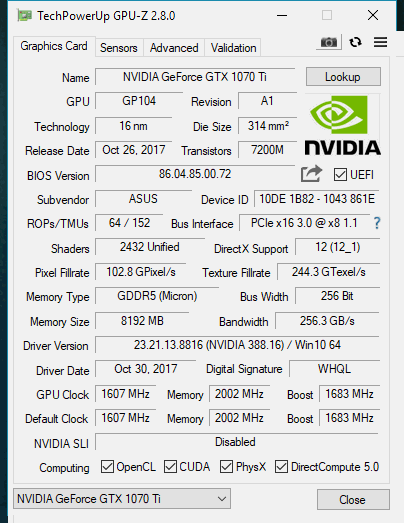


















Kommentieren